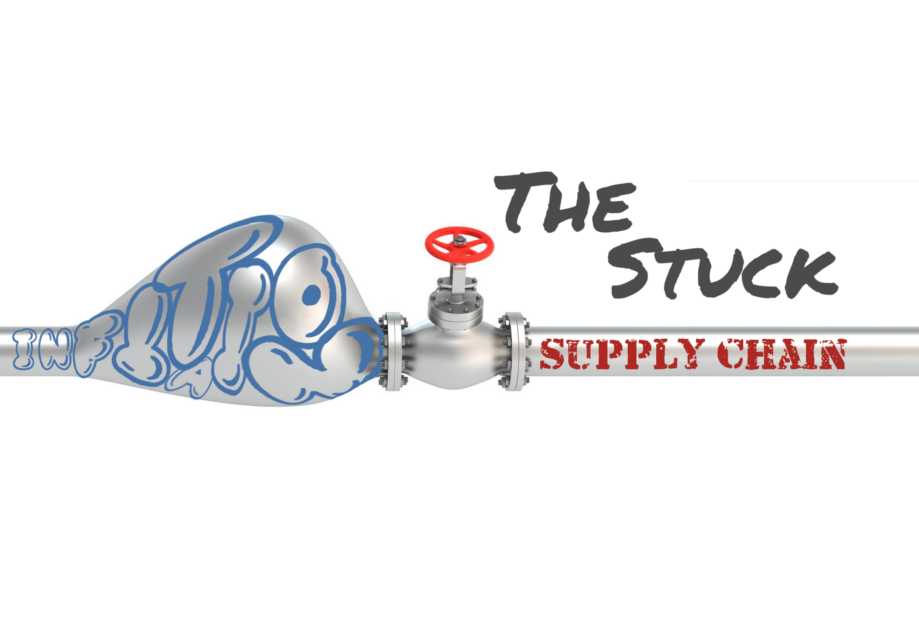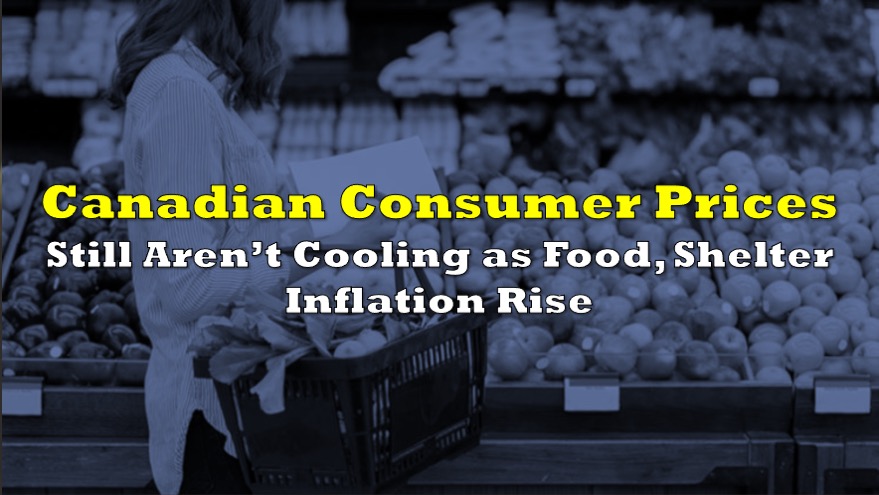Earnings season is upon us and, as analysts stare down previous quarters of growth numbers that are going to be difficult to beat, the financial media is getting ready for the coming misses with a narrative built around a convenient, all encompassing obstacle: The Supply Chain.
That isn’t to say it’s an excuse. There really are ships backed up at ports all around the world. Consumer goods really are failing to find their way onto shelves. But a potential in-progress collapse of the global economic system is a difficult thing to confront, and no editor outside of Zero Hedge would let you get away with a headline like that, so the line becomes “supply chain issues,” as if a couple of weak links have slowed it all down, and it’ll be straightened out once they get it sorted.
But attempts to explain what those links are don’t yet make all that much sense. Witness this column by veteran Financial Post columnist Diane Francis, who attributes supply chain disruptions to pent-up consumer demand, a microchip shortage, fuel costs, shipping costs, geopolitics (two different China angles here), and the pandemic. The global economy having apparently just run into a few bits of bad luck at the same time. It amounts to a rambling mess that doesn’t explain anything specifically or get anywhere useful, but we can’t exactly blame her; it’s a lot to take in.
There is, of course, no one singular supply chain. The manufacturing, distribution, and sale of consumer goods requires a confluence of numerous supply chains so, PlayStation 5’s and iPhone 13’s not being available in time for Christmas might represent a failure in any portion of any number of supply chains, and here we are seeing gaps in so many of them at the same time that the media has conflated them all into one broad failure. This is probably fine.

Attempts to explain multiple, sudden gaps in various different supply chains by any single phenomenon almost always start with energy, and that’s reasonable enough. $80/bbl is a seven year high for WTI, and it isn’t beyond anyone who has to shoulder fuel costs to hold out on their end of an operation until they can get someone else to shoulder fuel costs.
But fuel has cost more than this before for longer periods of time, especially adjusted for inflation, and it didn’t stop the trade of global goods. Fuel shortages popping up in the United Kingdom last month didn’t have anything to do with a lack of production or refining capacity. There just weren’t enough truckers available to get the the fuel to the stations at an acceptable pace, and that brings us, finally, to the heart of the matter.
In rural Texas we posted a $14/hour part-time cash container unloading job.
— Molson Hart (@Molson_Hart) October 12, 2021
No one showed up.
Now our team of 2 is unloading 35,000 pounds of Brain Flakes themselves.
Wild that $14 isn’t enough these days.
Pictures are old and for plush but it gives you an idea. pic.twitter.com/iVxFa2z7qI
The global economic collapse that should have come with the pandemic was forestalled by a massive injection of currency into the economy. Anyone want to see the M3 chart again? Here it is:

Governments printed money and gave it to companies to keep the corporate debt markets form collapsing. Rock bottom interest rates put equities markets in overdrive and fueled an economic boom that never had any right to exist in the first place, and effectively didn’t exist outside of the capital markets.

The inflation created by low interest rates doesn’t make its way into the price of consumer goods all at once. It makes a stopover in the capital markets and real estate markets first.

"Core CPI ex-shelter" is the new "Adjusted EBITDA"#CPI https://t.co/Yqx8lohUmc
— Carl Quintanilla (@carlquintanilla) October 13, 2021
The graphic above (thanks to Matthew B for this baby, and MSNBC’s own Carl Quintanilla for the color commentary), shows a 5% spike in the rate of inflation from one year ago, excluding food, shelter and energy. Inflation of the price of shelter jumped 3% by itself, which those of us who pay for a roof over our heads surely could have guessed.
As that capital expands those businesses, they might hire more workers…

But, cost being the enemy of margin, there’s no good reason to pay those workers any more money than they have to.

And so, in an economy awash with money, these workers go looking for a better deal.

Modern labor “innovations” have depreciated the traditional employment relationships, especially in the transportation sector, where owner-operators being squeezed by these fuel costs at the same time they’re being begged to come down and haul these containers around are surely all thinking the same thing: “pay me.” The Biden administration’s order yesterday to keep the L.A. ports open 24/7 is a nice idea, but the economics of getting in a truck to move a container aren’t any different at 3 am than they are at 3 pm.
Smacked by the unseeing hand
Market-based economies are built to solve problems like this through supply and demand. Theoretically, someone coughs up enough money to make moving a shipping container or working in a microchip factory worth it, and the world continues to turn. But capital is slow on the uptake, lacks imagination, and has a deep-seeded, primal understanding of what might happen once these workers get their grubby hands on some actual money.
Individual truck drivers or factory workers just not showing up for a job that isn’t worth doing isn’t a formal strike, it’s just supply and demand failing to find a price. In the context of record earnings and widely available capital, it might be called a capital strike.
But the portions of the labour market that are organized are are seizing the opportunity represented by these economics a lot more formally. Some of the highest wages in the country aren’t enough to keep Kellogg’s and John Deere workers from demanding more, and US chapters of film union IATSE have also voted to strike, and plan to walk off sets if a deal isn’t reached by Monday. Denying the public movies and cereal is a gamble that those unions wouldn’t take unless they felt they’d get a critical mass of support from the public; further indication that these record earnings are going to have to get kicked down despite the objection of the markets and the C-Suite. Those higher wages can either become baked into the price of goods, or eat into corporate profits, which brings us to our next inflection point.
Inflation: This is Not A Drill

An increase in base and real wages is about as inflationary an event as you can get, because wage earners don’t tend to hoard money, they tend to spend it. And the only way to really get on top of inflation is to jack the interest rates until the economy cools off.
But this modern freak-show of an economy isn’t built to take that kid of de-throttling. Vital parts of it are operated by businesses that consistently bleed money, because there’s always more available from the capital markets. Paul Volker-style rate increases would push money out of the equities markets on a scale that would finish a lot of these zombie co’s, turn the venture capital markets into a ghost town, and make the housing market look like a horror scene.
A choice between crashing the economy and inflation isn’t a choice at all. Banks and governments have shown they’re willing to tolerate inflation to facilitate economic growth, so it’s reasonable to expect they’ll tolerate it to stave off an economic collapse. As prices start to rise, investors might want to hold on to assets that tend to rise with them.
Information for this briefing was found via the St. Louis Federal Reserve, Bloomberg, The Financial Times and the companies mentioned. The author has no securities or affiliations related to this organization. Not a recommendation to buy or sell. Always do additional research and consult a professional before purchasing a security. The author holds no licenses.









